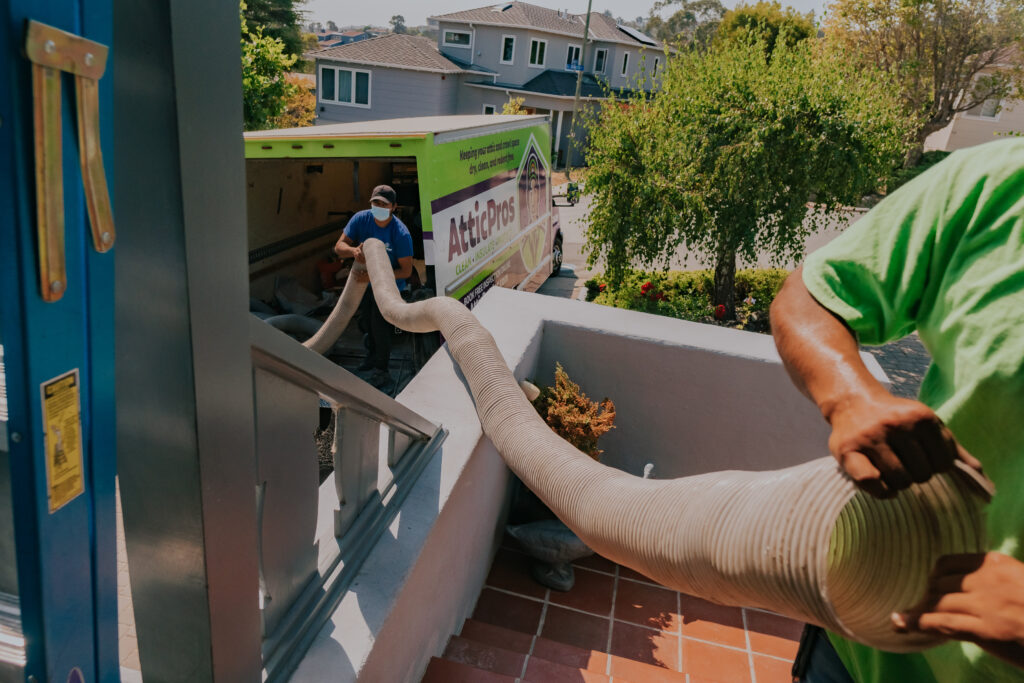Winter Flood Risks: Protect Your Home from Excess Moisture
Winter weather brings unique challenges, with melting snow and heavy rains contributing to increased flood risks. Water damage prevention and proper drainage solutions are crucial in protecting your home from the harmful effects of excess moisture during the colder months. Here’s how you can safeguard your home from winter flooding and moisture-related issues.
Why Winter Flood Risks Are a Concern
When winter storms hit, the combination of snow, ice, and heavy rainfall can lead to excess moisture around your home’s foundation, increasing the risk of flooding. Poor drainage systems and improper water management can cause water to pool near your home, potentially leading to:
- Foundation Damage: Water can seep into your basement or crawl space, causing structural damage.
- Mold Growth: Excess moisture promotes mold and mildew growth, compromising air quality and your home’s health.
- Pest Infestations: Moist conditions attract pests like rodents and insects, which thrive in damp environments.
By understanding and addressing these risks, you can protect your home and ensure it remains dry, safe, and comfortable throughout the winter.
Effective Water Damage Prevention Strategies
- Inspect Your Gutters and Downspouts
Gutters and downspouts play a crucial role in directing water away from your home’s foundation. When clogged or damaged, they can lead to overflow, causing water to pool around your home.
- Clean Gutters Regularly: Remove leaves, debris, and dirt from your gutters to ensure proper water flow.
- Extend Downspouts: Make sure your downspouts direct water at least 3 to 5 feet away from your home’s foundation to prevent pooling.
- Ensure Proper Drainage Around Your Home
Your home’s drainage system must be in optimal condition to prevent water from accumulating around your foundation.
- Grade Your Yard: Ensure that your lawn slopes away from your foundation to allow water to drain properly.
- Install French Drains: Consider installing French drains to redirect water away from your home’s perimeter.
- Seal Foundation Cracks
Even small cracks in your foundation can allow water to seep into your basement or crawl space, leading to moisture buildup.
- Inspect and Seal Cracks: Regularly inspect your foundation for any visible cracks and seal them to prevent water infiltration.
Preventing Moisture and Flooding in Your Basement or Crawl Space
Your basement or crawl space is especially vulnerable to excess moisture during winter. Here are key strategies to ensure these areas remain dry:
- Install a Sump Pump
A sump pump is an essential tool for keeping your basement dry, especially in areas prone to flooding. It helps pump excess water out of the basement before it can cause damage.
- Consider a Backup Sump Pump: In case of power failure, a battery-powered backup sump pump can continue to protect your home.
- Use Vapor Barriers
Installing vapor barriers in your basement or crawl space helps reduce moisture buildup by preventing water from seeping through the floors.
- Seal the Ground: Use a heavy-duty plastic vapor barrier to cover the ground and prevent moisture from rising into the air.
- Improve Ventilation
Proper ventilation in your crawl space and basement can help reduce moisture levels and prevent mold growth.
- Install Vents or Fans: Ensure that your crawl space or basement has adequate ventilation to reduce humidity levels and keep air circulating.
Why Drainage Solutions Are Critical for Winter Flood Protection
Drainage solutions are essential for winter flood protection, as they ensure water is effectively diverted away from your home. Without proper drainage, water can accumulate near your foundation, leading to:
- Erosion: Persistent water around your home can erode the soil, weakening the foundation and causing long-term structural issues.
- Flooding: Without proper diversion, excess water can flood your basement, crawl space, or even the lower levels of your home, causing significant damage.
To prevent these risks, make sure to maintain a reliable drainage system that includes French drains, surface drains, and properly functioning gutters.
Additional Tips for Preventing Winter Flooding and Moisture Issues
- Insulate Your Pipes
Freezing pipes can burst and cause flooding in your home. To prevent this, insulate pipes in vulnerable areas like attics, crawl spaces, and basements.
- Pipe Insulation: Use foam pipe insulation or heat tape to protect exposed pipes from freezing temperatures.
- Install a Dehumidifier
A dehumidifier in your basement or crawl space helps maintain optimal humidity levels, reducing the risk of mold and mildew growth.
- Check Your Roof
A damaged roof can allow snow and ice to accumulate, leading to water leaks and potential flooding.
- Roof Inspection: Check your roof for any damage or areas where water might pool, and repair any issues promptly.
Conclusion: Protect Your Home from Winter Flood Risks
Water damage prevention and effective drainage solutions are essential for safeguarding your home against the risks of winter flooding and excess moisture buildup. By maintaining a proper drainage system, sealing foundation cracks, and addressing moisture control in your basement or crawl space, you can protect your home from the damaging effects of winter storms.
Contact us today for expert winter flood protection services and ensure your home remains dry and safe throughout the colder months!

